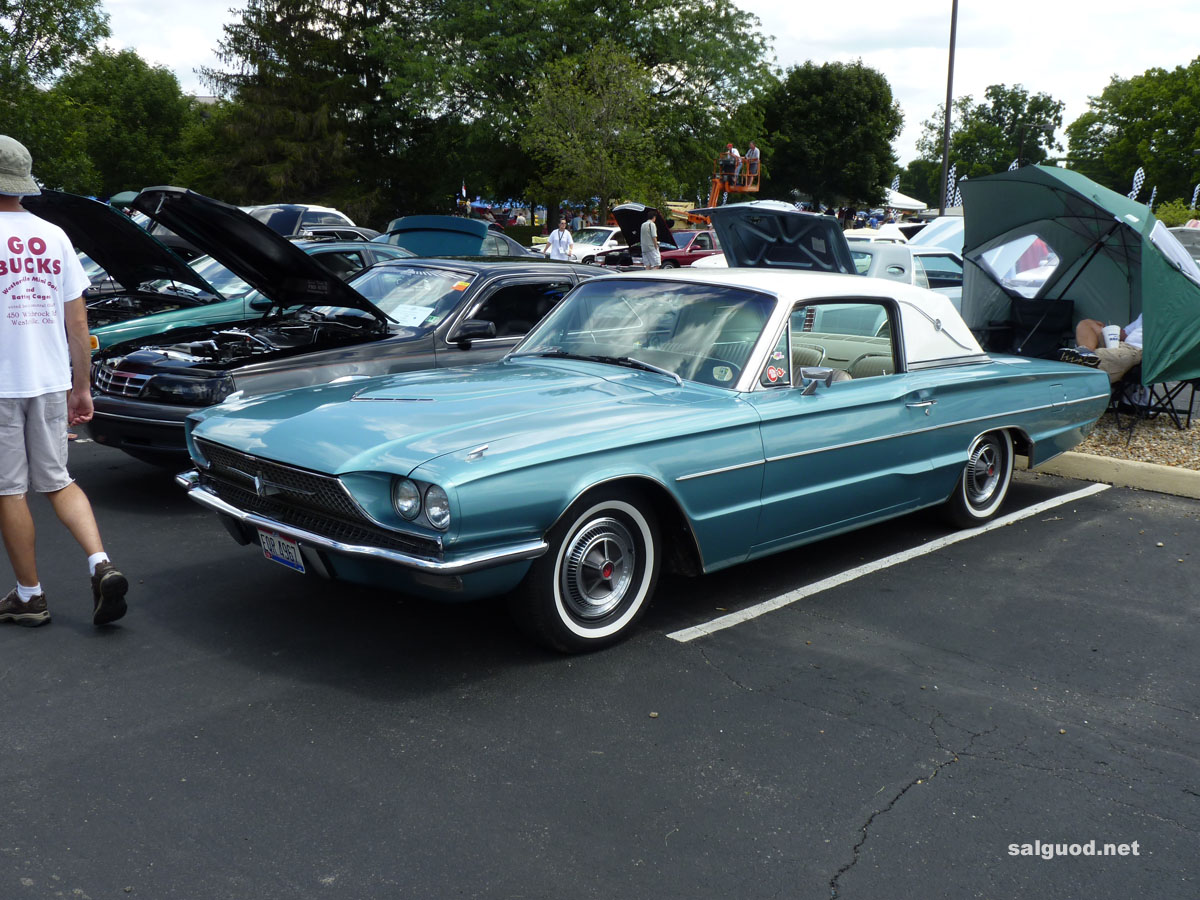

Most of the true craftsmen are dead and gone and have been replaced by a much less skilled type of workmanship. I have been restoring old cars for twenty-five years and have seen all types of workmanship and quality. I think your sheet metal products are great! Keep up the good work of helping save T-Birds!Ĭall me if you need any other information. I also passed along your catalog to another guy who has a 1964 convertible. the small lip on the lower bottom edge of rear quarter). The car always looked good, but now it looks GREAT!! The body shop was very complimentary of the quality of your panels, especially the detail (i.e. Keep up the good work.Įnclosed are some pictures of my 1970 bird during and after replacing quarter panels with your product.
#1966 FORD THUNDERBIRD INSTALL#
As a result of this fit, it was much easier and took a lot less time to install them than I had anticipated, also I want to thank you and your staff for giving me personal attention concerning some technical questions I had.
#1966 FORD THUNDERBIRD PATCH#
The floor pans, inner and outer rocker panels, rear quarter extensions and the rear quarter patch panels you sent me for my 1957 Thunderbird all fit perfectly. Thank you for producing such great products. What a surprise top service, good looking quality and well packaged for the trip across the pond.

Only took 8 days from order to delivery in Australia. The optional 428 cost only $86 over the base engine.[ This would be the last year for the convertible until the "retro" models of 2002-05.I ordered two rear dog leg rust repair panels for a 66 Galaxie Hardtop.

Newly optional and taking the top position for performance was a 345 hp (257 kW) 428 cu in (7.0 L) FE V8. The standard 390 cu in (6.4 L) V8 equipped with a single four-barrel carburetor was rated at 315 hp (235 kW). Engine choices were also revised for 1966. The rear bumper was restyled to include new full-width taillamps. Also new for 1965 were standard front disc brakes, and doubled-sided keys.Įven though it was the last year of the generation, 1966 saw a stylistic revision for the Thunderbird highlighted by a new egg-crate style grille with a large Thunderbird emblem at its center and a single-blade front bumper. For 1965, sequential turn signals were added, flashing the individual segments of the broad, horizontal tail lights in sequences from inside to outside to indicate a turn. It was paired with a 3-speed automatic transmission. The 300 hp (224 kW) 390 cu in (6.4 L) FE V8 continued as the standard engine for the Thunderbird. As before, the new Thunderbird continued to be offered in hardtop, convertible, and Landau versions. Hinting at its roots in the previous generation of Thunderbird that it evolved from, the new model retained a similar grille design with quad headlights and a 113.2 inches (2,875 mm) wheelbase. From 1968 to 1998, Lincoln-Mercury marketed rebadged variants of the Thunderbird as the Continental Mark III, Mark IV, Mark V, Mercury Cougar, Lincoln Mark VII, and Lincoln Mark VIII.įor 1964 the Thunderbird was restyled in favor of a more squared-off appearance, which was mostly evident when viewing the car from the side or rear. An American interpretation of the grand tourer, personal luxury cars were built with a higher emphasis on driving comfort and convenience features over handling and high-speed performance. These included a four-seat hardtop coupe, four-seat convertible, five-seat convertible and hardtop, four-door pillared hardtop sedan, six-passenger hardtop coupe, and five-passenger pillared coupe, with the final generation designed again as a two-seat convertible.įord targeted the two-seat Thunderbird as an upscale model, but the design introduced for 1958 featured a rear seat and arguably marked expansion of a market segment eventually known as personal luxury cars. Introduced as a two-seat convertible, the Thunderbird was produced in a variety of body configurations. Ford Thunderbird (colloquially called the T-Bird) is a personal luxury car produced by Ford from model years 1955 to 19 to 2005 throughout eleven distinct generations.


 0 kommentar(er)
0 kommentar(er)
